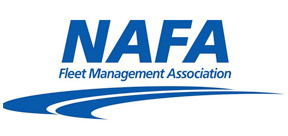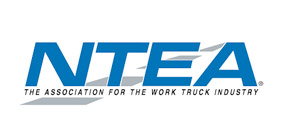Editor’s Note: February 2012
Coal tar sealant concerns deserve consideration
There’s just not much that can save the month of February.
Winter feels like it’s outstaying its welcome. At the same time, the opportunities to get away and improve your perspective at industry conferences dwindle. New Year’s Eve is just a memory, yet it’s too early to worry about what the summer will bring. February seems made explicitly for dedicating time to the back-burner list of issues that aren’t quite emergencies yet never seem to go away, either.
I’m adding the coal tar sealant controversy to my list. Several dozen cities, counties, retailers and even the entire state of Washington have found enough danger in pavement sealers made from toxic coal tar to prohibit further sales or applications of the stuff in their domains. One finding from the USGS that caught my eye was most direct human contact with the carcinogenic and mutagenic polycyclic aromatic hydrocarbons in coal tar is through coal tar-infected dust and those concentrations were 25 times higher than average in houses located next door to coal tar-sealed parking lots.
I have a tendency to assume any opinion is one-sided, though, so I read some of the counter arguments carefully. In a letter drafted in June and posted online, Anne LeHuray of the Pavement Coatings Technology Council warned the Suffolk County, Va., governing body a coal tar sealant ban would destroy hundreds of local jobs and lower county tax revenues. But according to a recent EPA report, a representative of the National Pavement Contractors Association directly contradicted that assertion. The unnamed source said pavement sealing contractors actually stand to receive more work from a coal tar sealant ban because asphalt-based sealants require more frequent reapplications than coal tar sealants.
Robert DeMott of Environ corporation suggests part of the reason Austin, Texas, succeeded in sounding the coal tar sealant alarm is due to media hype and an opportunistic grab for glory.
While both can happen, the fact is scholarly investigations of the product persist and support the case for concern. That seems to nullify any possible glory-grabbing motivations.
Some of the resources I considered are listed at the end of The Municipal’s coal tar sealant story. Read them, follow their links and see what conclusions you come to. Is it time for your municipality to ban coal tar sealants? Now seems like as good a time as any to start investigating the issue.
We hope you find that article and the rest of valuable. Thanks for reading, and we’ll see you again in March.this month’s edition of The Municipal
Jodi Magallanes
Editor




Thank you for your well-reasoned article. I didn’t see your link to additional resources. Will that be in the print version only?
If your readers want to look at the web’s most in-depth source of news and information on this topic including videos from the researchers and an up-to-date list of where there are bans, then please consider my site.
The full article on Coal Tar Sealers will be featured in full on the site shortly. This article here is simply the Editor’s Note from page 6 of the February 2012 issue of The Municipal.
Understanding that there are 2 opposing sides – I believe that the following can be considered – Independent!
Independent – (adj) – Bing Dictionary
1.not controlled by another: in politics, free from the authority, control, or domination of somebody or something else, especially not controlled by another state or organization and able to self-govern
2.able to function by self: able to operate alone because not dependent on somebody or something else
3.self-supporting: not forced to rely on another for money or support
The following is “Independent” –
Valle, S., Panero, M., Shor, L., Pollution Prevention And Management Strategies For Polycyclic Aromatic Hydrocarbons In The New York/New Jersey Harbor. New York Academy of Science, September 2007.
“Today, a general consensus of literature reports two major national and global sources of PAHs in the environment: 1) incomplete combustion of organic matter, especially common, nonpoint activities that utilize modern emissions controls (e.g., cars) or less common activities with no emissions control (e.g., tire fires); and
2) releases of petroleum, including oil spills and illegal dumping. Major sources include forest fires, motor vehicle emissions, open burning, domestic fireplaces, and spills and dumping of petroleum products. (page 47)
“Our estimates indicate that transportation-related activity (i.e., on-road and off-road engine exhaust, tire wear, and motor oil disposal and leakage) is the source category contributing most greatly to total loadings of PAHs”. (page 27)
Study determined that refined tar based sealer to be a minor source of PAHs to the NY/NJ harbor watershed (less than 1% total contribution). (pages 21 & 26)
NYAS reconsidered and dropped PAH loading estimate recommended by COA.
NYAS rejected COA photographic sealer wear-off estimation.
NYAS saw flawed conceptual study design and flawed statistical analysis (errors in calculations) in the COA studies.